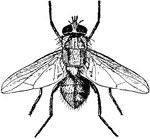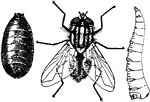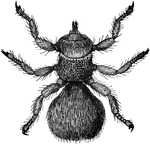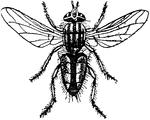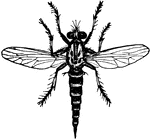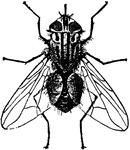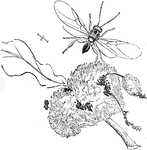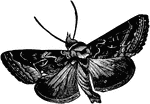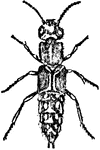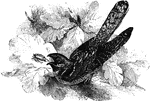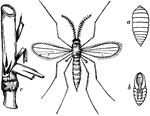
Stages of the Hessian Fly
Now known as Mayetiola destructor: "Hessian Fly (Cecidomyia destructor). a, larva; b, pupa; c, infested…
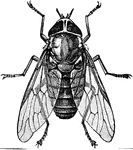
Dorsal View of Horsefly
Tabanus americanus is a species of biting horsefly in the Tabanidae family of horseflies. It was also…
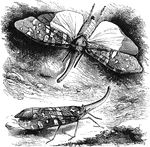
Lantern Fly
"The family of Fulgorina includes the Lantern-flies, of which a large species inhabiting…
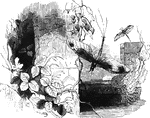
May Fly
"These insects are called Day-flies from the shortness of their existence in the perfect state;…
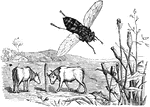
Ox Fly
"The Ox-fly, Oestrus bovis, is three-forths of an inch long, and lays its eggs in the skin of young…
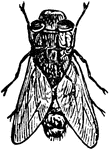
Sheep Bot Fly
The adult Sheep Bot Fly (Oestrus ovis) is a fly in the Oestridae family of bot flies and is known as…

Sheep Bot Fly
The adult Sheep Bot Fly (Oestrus ovis) is a fly in the Oestridae family of bot flies and is known as…

Sheep Bot Fly
The enclosed puparium of the Sheep Bot Fly (Oestrus ovis) is a fly in the Oestridae family of bot flies…
Sheep Bot Fly
The full grown larva of the Sheep Bot Fly (Oestrus ovis) is a fly in the Oestridae family of bot flies…

Sheep Bot Fly
The full grown larva of the Sheep Bot Fly (Oestrus ovis) is a fly in the Oestridae family of bot flies…
Sheep Bot Fly
The young larva of the Sheep Bot Fly (Oestrus ovis) is a fly in the Oestridae family of bot flies and…

Spanish Fly
"These insects are common in the South of Europe, and are especially abundant in Spain, where they are…

Spider Fly
"Spider Fly is a genus of dipterous insects, chiefly allied to the forest fly. The insects are parasitical…
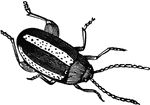
Turnip Fly
The European Turnip-Fly, Haltica nemorum, one of the most destructive species, belongs to a…
Frog Hopper on Leaf
"Frog Hoppers are ranked under the homopterous sub-order of insects. The name of frog hopper refers…

Adult Frog Hopper
"Frog Hoppers are ranked under the homopterous sub-order of insects. The name of frog hopper refers…

Larva, Frothy Section, and Perfect Insect of the Frog Hopper
Frog hoppers belong to the order Heteroptera. This order is also known as plant bugs. These insects…
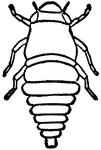
Larval Frog Hopper
"Frog Hoppers are ranked under the homopterous sub-order of insects. The name of frog hopper refers…
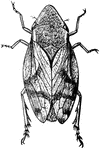
Dorsal View of Froghopper
Aphrophora quadrangularis is a species of Froghopper, an insect in the order Hemiptera.
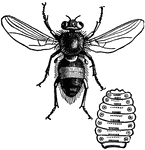
Gadfly of Ox
This illustration shows the Gadfly of the Ox. This illustration is enlarged, and also shows a Gadfly…
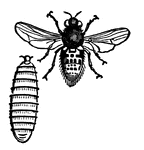
Gadfly of Sheep
The Gadfly of the sheep lays its eggs in the nostrils of the sheep. There, the maggots hatch and live…

Grape Gall Louse Damage
"Grape Gall-louse (Phylloxera vastatrix), the small figures showing natural sizes. Roots of vine, showing…
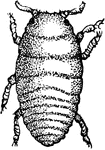
Grape Gall Louse Larva
"Grape Gall-louse (Phylloxera vastatrix), the small figures showing natural sizes. Larva as it appears…
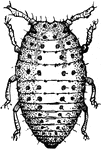
Grape Gall Louse
"Grape Gall-louse (Phylloxera vastatrix), the small figures showing natural sizes. Form of mature louse."…

Grape Gall Louse
"Grape Gall-louse (Phylloxera vastatrix), the small figures showing natural sizes. Form of mature louse."…
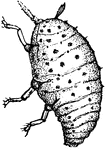
Grape Gall Louse
"Grape Gall-louse (Phylloxera vastatrix), the small figures showing natural sizes. Form of mature louse."…
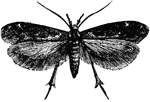
Dorsal View of Gall Moth
Gelechia gallae-solidaginis is a species of gall moth, an insect in the Gelechiidae family of Gelechiid…
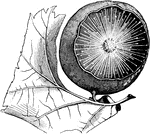
Oak Apple Gall
"Gall, or Oak-apple, produced by Cynips quercus-inanis, showing the internal cobwebby structure. Gall:…
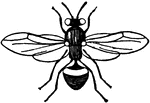
Gall-fly
Gall-fly is a name applied to the members of the family Cynipidae, which are not flies, but are related…
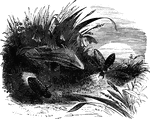
Glowworm
"The female is chiefly luminous. It is a flat, grayish-brown creature, rather more than half an inch…

Common Glowworm
The Common Glowworm (Lampyris noctiluca) is a species of beetle in the Lampyridae family of fireflies.
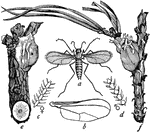
Resin Gnat
"Resin-gnat (Diplosis resinicola). a, adult female; b, wing of same; c, cross-section of antenna…
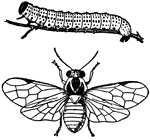
Gooseberry Caterpillar (Nematus ribesii) and Sawfly
Gooseberry Caterpillar is the name applied to the larvæ of two different insects, both injurious to…

Carolina Grasshopper
"The Carolina Grasshopper, Gryllus Carolina, is a large species with brown wings, common in…

Female Grasshopper
Grasshoppers are insects of the suborder Caelifera in the order Orthoptera. To distinguish them from…

Green Grasshopper
Grasshoppers belong to the order Orthoptera. Grasshoppers have mouths fit for biting, net-veined wings,…

Red-Legged Grasshopper
A female Red-Legged Grasshopper. Melanoplus femurrubrum is an insect in the Acrididae family of grasshoppers.
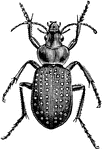
Fiery Ground Beetle
The Fiery Ground Beetle (Calosoma calidium) is an insect in the Carabidae family of carabids.
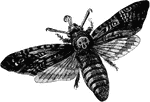
Death's-Head Hawkmoth
This insect is easily identified by the vaguely human skull-shaped pattern of markings on the thorax.
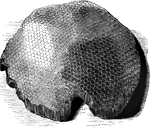
honey-comb
"The comb is made of wax, found in various plants, but which is also secreted by the bees themselves…

Hornets and Nest
"The Hornets resemble the Wasps in their habits, but but they are noted for their spitefulness and the…
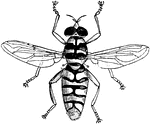
Hoverfly
Flies in the family Syrphidae are commonly known as hoverflies, flower flies, or syrphid flies.As their…
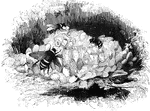
Interior of the Humble-Bee's Nest
"The Humble-bees, or as they are often called in this country, the Bumble-bees are…

Humming Bird Hawk Moth
The humming bird hawk moth has long, narrow front wings. The front wings move rapidly causing the moth…
